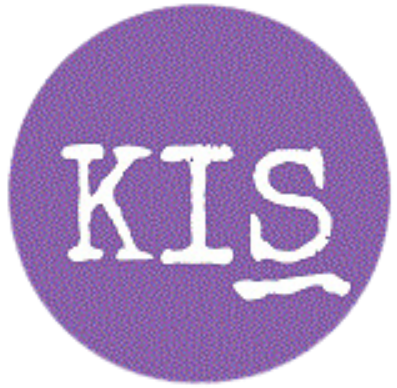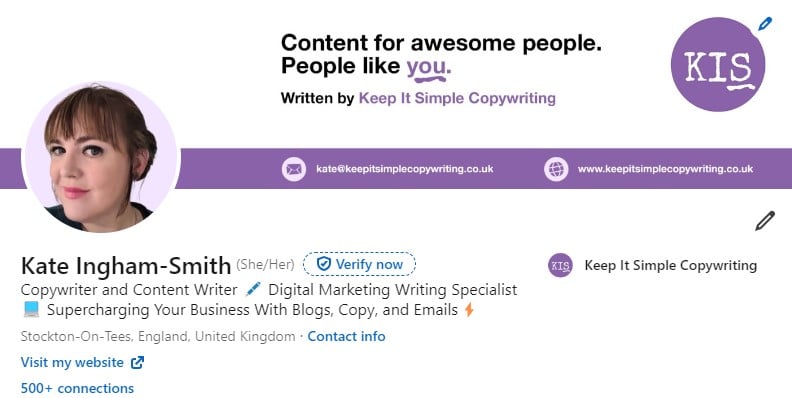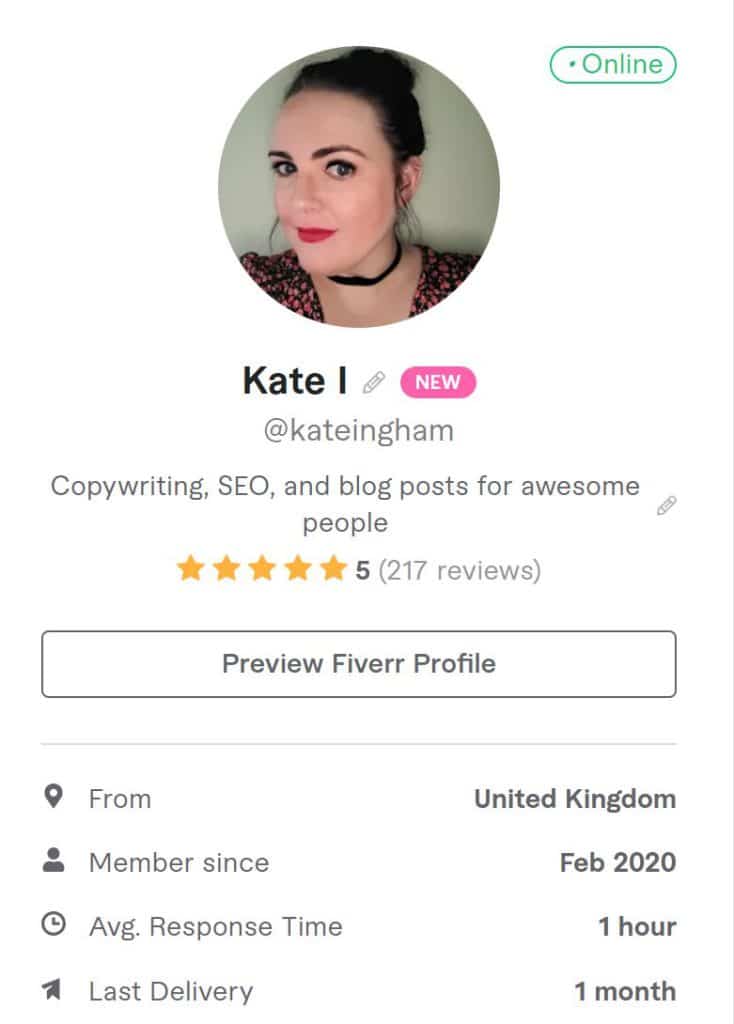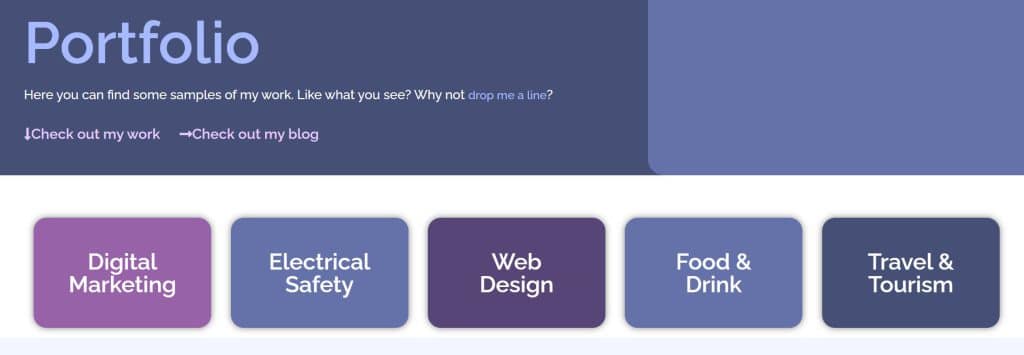Want to know how to launch your freelance copywriting business? I’ve put together this guide based on my experiences.
From deciding how much to charge to how to get your first clients, you’ll find the answers here.
Note: If you click on some of the links in this article, I’ll earn a small commission. This will keep me in coffee so I can continue to write awesome articles!
People often ask me how to get into freelance copywriting and what advice I’d give to those who want to get started.
So, I thought I’d put my thoughts together into one long blog post.
I can’t say my experiences will mirror yours or promise that this information will lead to you earning six figures a month (and if it does, I should be asking you for advice!)
But I hope that it gets you off to a good start.
My origin story – how I got started as a freelance copywriter
I’ve been working as a freelance copywriter since June 2020.
Before then, I worked in digital marketing for about 15 years. While I spent a lot of time working on branding, web development and PPC campaigns, copywriting and content writing were a large part of my job, and my first love.
I lost my sales and marketing manager job during the pandemic.
It wasn’t a nice place to work, and I’ll be honest, I breathed a sigh of relief when I got let go – the place made Succession look like Sesame Street.
However I was worried about how I’d pay the bills, so I decided to freelance to bring in some money.
When I started out, I was working silly hours and earning little to no money. But hey, the fridge was full and the lights stayed on.
In July, I got a part-time marketing job, and my manager was cool with me continuing to freelance, so I juggled both for a year and a bit.
I’d drive to work, write SEO-optimised articles for my employer, then drive home and write SEO-optimised articles for my freelance clients until it was time for bed.
By autumn the following year, I realised I couldn’t do both anymore, and for the sake of my free time and mental health, something would have to give.
It was time to crunch the numbers.
Not only was I earning more money freelancing, but I had a better work-life balance too. I didn’t have to spend time commuting to work, and I could work the hours I wanted.
So, I handed in my notice at my job and by November 2021, I was freelancing full-time.
(*Insert celebratory emoji here*)
Now, let’s look at how you can get started if you want to make the move into freelance copywriting.
Step #1: Put together a marketing plan
The first thing you need to do before buying that website domain or getting a cool logo designed?
Work out a plan of action.
By identifying who you want to target and what type of content you want to write, you’re one step closer to finding the right people to work with.
That means more job satisfaction and that you’re less likely to give up and upload your CV to Indeed three months down the line.
You don’t need a massive marketing plan. Even a sheet of A4 will do.
Think about:
Who your target audience is
This will help you focus your marketing on the people and businesses most likely to benefit from your services.
Who your target audience isn’t
This might sound weird, but knowing who you don’t want to market your services to means you don’t waste time chasing the wrong people.
The industries you specialise in
There’s a lot of debate over whether you should focus on a niche or offer writing across a range of sectors.
While niching down can lead to more money, a generalist approach can mean more work.
I started off as a generalist writer to get experience and then moved to focus on digital marketing.
Where you’ll market your services
Marketing your new copywriting business is just as important as the actual writing you’ll do.
It’s helpful during quiet periods as you can focus on building a pipeline of prospective customers.
What your unique selling point is
What do you offer that those in your sector don’t?
This can help give you the edge if a prospective customer can’t choose between you and a competitor.
For example, I also offer SEO keyword analysis to help customers rank in the search engine results.
Don’t forget to be flexible
Appreciate that your marketing plan might change.
When I first started out, I offered a range of digital marketing services, including social media management and PPC management.
However, I realised that copywriting was what I was best at, so I pivoted to focus on just that.
Step #2: Find your first client
Your first mission, should you choose to accept it? Find your first paying customer!
Having a marketing plan helps here, as it provides a clear steer as to who to approach and how to approach them.
Here are some channels to help you locate your first paying customer, alongside the pros and cons.
Social media
Social media can be a great way to find clients. You can use it to connect with the right businesses, join the right conversations, and gain people’s trust.
In fact, 77% of small businesses use social media to reach prospective customers.
Which social media network should you use? It depends on where your clients are.
There’s no point selling your services on Instagram if that’s not where your target audience spends their time.
In my opinion, LinkedIn is a great all-rounder. Here’s how to make the most of your profile.
-
- Fill in as much of your profile as possible, including the services you offer and the featured section
- SEO doesn’t just apply to web pages; you can also use it on your profile! Think of the keywords customers are most likely to use, and add them to your title and job section
- Ask people you’ve worked with to leave recommendations and endorsements – these can show prospective customers why they should work with you
- Take a high-quality profile photo that shows you at your best – natural light is best. You don’t need professional equipment… a snap on a mobile phone will do the job
Don’t forget to post regularly so prospective customers get to know you.
If you’re stuck on what to write about, why not check out my 30 days of LinkedIn prompts?
Cold emails
Cold emails are brilliant for reaching out to people who may not have heard of your business.
Quality is better than quantity when it comes to cold email outreach.
Focus on a handful of targeted clients rather than sending the same boring message to hundreds of people and crossing your fingers.
Here’s how to send cold emails without getting banished to the junk mail folder.
Job marketplaces
By job marketplaces, I mean websites like Fiverr, Upwork, and People Per Hour.
These platforms let you advertise your copywriting services in exchange for a commission.
I don’t use these platforms now, but they were invaluable to me when I started my freelance career.
Fiverr was especially beneficial as clients came to me rather than having to pitch to them.
As I was working a part-time job when I started freelancing, it meant I could come home to a couple of new jobs.
Another benefit is that these freelancing platforms work on escrow – the client pays the platform, which releases the money to you when the work is signed off.
This means no invoices or chasing up clients for payment (more about this later).
In my first year of work, I’d say about 80% of my projects came from these platforms.
However, these platforms have substantial disadvantages – you’re often treated as a commodity rather than a person.
Over the three or so years I used them, the following happened to me:
-
- A client returned a project for revisions because it was four (count’ em) words under the proposed word count
- A prospective client hurled abuse at me because I didn’t respond to his message in a timely manner (he was in Canada and messaged me while I was asleep)
- A client downvoted me because I didn’t deliver his content ‘in good time’ (we agreed on five days and I sent it to him in three)
- A client decided that they wanted me to write about something else, ten minutes after I sent over their finished article (I cancelled the project and told them to get stuffed)
- Someone offered me $3 to write 500 words of content
- A potential client messaged me at 7am on Christmas Day to ask if I’d write an article with a two-day turnaround
And let’s not forget about the fraudulent stuff. Seriously, so many scams.
If someone asks for money or to continue the conversation off-platform, block, report, and move on.
The other issue with these platforms is that you’re unlikely to build solid relationships with clients like you would with networking or using social media.
Many people who use these marketplaces are only interested in working with the cheapest providers.
I always lost clients when I increased my prices, even if it was only by £5.
So, are platforms like Fiverr and Upwork worth signing up for?
You have nothing to lose, as you only pay a commission on the work you complete.
However, you’re not going to make a lot of money out of them, and it can feel like a ‘race to the bottom’ sometimes.
I found them helpful when I was starting my freelance journey as they meant a steady source of income and allowed me to get to grips with a variety of different projects.
But I outgrew them, and you probably will too.
Job email newsletters
There are lots of email newsletters out there with information about copywriting jobs.
Personally, I haven’t had much luck with newsletters.
There’s either a lot of competition for each job, the pay is rubbish, or things move so quickly that by the time the job has made the newsletter, the position has been filled.
I’ve had more joy with paid rather than free newsletters, just as there’s less demand for each job and the jobs are more targeted, but your mileage may vary.
Tenders
A tender is a document that you need to complete in order to bid for a contract.
Many large and government organisations use tenders as they’re a) objective and b) let them find the right person for the job at the most affordable price.
Copywriting tenders tend to be large and extremely lucrative. I once submitted a tender application for a local council that wanted all 1,000 pages of its website rewritten.
However, you need to put a lot of work in to apply.
You’ll be asked to provide references, answer questions about hypothetical situations, and show evidence of qualifications.
In my personal experience, I wouldn’t use tender portals as your sole way of finding work.
However, if you find a tender that sounds perfect, don’t be afraid to submit an application.
Tap your existing sources
One of the easiest ways to get started is to contact your existing contacts, like partners and suppliers from work.
Just send them an email or LinkedIn message letting them know you’re going into business as a freelancer and that you’d like to keep in touch.
Even if this doesn’t lead to immediate work, it will keep you on their radars for a while.
(Of course, make sure this is okay and that there aren’t any non-compete clauses in your work contract. You don’t want to get accused of poaching clients.)
The business I worked for used my services off and on for about eighteen months after I left, so it’s definitely worth parting on good terms!
Step #4: Identify the right rate
How much should you charge for your freelancing services?
How long is a piece of string…
Your rate depends on a range of factors, including your experience, what you’re writing, and the industry you’re in.
Technical copywriters, like those in the legal and medical sectors, can generally command a higher rate than generalist writers.
Someone once gave me an excellent piece of advice. They said, ‘If you’re not panicking when you send your quote over, you’re not charging enough.’
And this is true – many freelancers, especially women, underestimate their abilities and lowball themselves.
One other piece of advice I should give – don’t fall into the trap of wanting to earn the same as you did in your full-time job.
If you earned, say £30,000 in your previous role, you’ll want to earn significantly more as a freelancer – perhaps add £10,000 on top of that.
This is because you don’t get benefits like holidays, sick pay, or pensions when you freelance.
If you catch the flu and have to take a few days off work to recover, you’re on your own. (More about this later.)
Project, hourly, or per-word?
Should you charge per project, per hour, or per word?
In my experience, project pricing is the way to go.
The issue with hourly pricing is that the more skilled you are, the less money you get.
If it takes you three hours to write an article, but as you get to grips with the subject matter, it takes you two hours, you’re getting screwed over for becoming experienced.
Per word pricing can be an easy way to gauge how much to charge when you’re starting out. If you use a platform like Fiverr, this is how rates are determined.
However depending on complexity, client needs, and subject matter, a 500-word article could take an hour to write, or it could take a day.
Of course, some clients may insist on paying you hourly or per word – hourly or daily pricing is common if you work on behalf of an agency.
In this situation, charge what you’re worth and not what you think will appeal most to your client.
Don’t forget to pay your taxes
As freelancers aren’t taxed at the source like folks in employment are, you have to file a tax return annually.
This determines how much tax you need to pay, which you need to do twice a year – at the end of January and the end of July.
Filing a tax return is one of the worst things about being a freelancer, but like going to the dentist or eating your vegetables, you have to do it.
I find it’s easier to squirrel away 30% of my income each time I get an invoice. That way, I’m not tempted to spend it and know I won’t be running around like a headless chicken when it’s time to pay up.
Try and put into a private pension too, if you can. It might feel like a waste of money, especially when you’re finding your feet, but it means you can plan for the future.
Plus, you get tax relief on your private pension contributions, meaning you pay less tax overall.
I use PensionBee for my private pension – it’s easy to set one-off contributions off and the customer service is great.
(If you use my referral link I get a referral bonus!)
Important note: The UK Government is introducing ‘Making Tax Digital’ next year.
If you earn over £50,000, from April 2026, you will need to use a Government-mandated piece of software to track your earnings and submit quarterly reports.
(I’m still trying to get my head around how it all works, as the Government has released naff-all information about it.)
Step #5: Put together a portfolio
A portfolio of work is vital when you’re starting out.
It shows prospective clients what you’re capable of and showcases your experience in the industries you want to focus on.
If you already have a personal website, I recommend hosting your portfolio there.
This is because you have complete control over how your portfolio looks and functions.
I once hosted my portfolio on a third-party website, and it hid my portfolio for no reason without telling me.
And sending a link that doesn’t work to a potential customer is a great way to lose out on work.
If you don’t have a website, use Google Drive or Microsoft OneDrive.
Pop your writing samples in a folder, grant general access, and share the link with prospective clients.
The benefit of this approach is that you can create multiple folders and tailor your portfolio to specific clients and their needs.
How to get content for your portfolio
If you’re new to copywriting, you’ll need some samples for your portfolio.
You don’t need hundreds of pieces – four or five high-quality, relevant examples are enough.
The question is, how do you get them?
Here’s how to get your portfolio up and running:
- Use content from your previous place of work. Get permission from your employer and check your employment contract first – if you’re going into direct competition with them, they might not be keen!
- Look online for bylined work – work that has your name attached to it
- Create your own sample content. Imagine you’ve been asked to create an article, landing page, or sales email by a dream client, and put something together. This is a great way to hone your skills!
Other questions I get asked about freelancing
Here are some additional questions I’ve been asked about becoming a freelance copywriter that don’t quite fit into the rest of this article.
What does a typical freelancing day look like?
It’s hard to say! It varies from freelancer to freelancer, and even from day to day.
I like structure, so I try to keep office hours where I can – starting work at 8 or 9, and finishing at 4 or 5, with a break in between.
However it’s nice to have flexibility. Sometimes I’ll take a few hours off to run errands or meet friends, and make up the time later if I need to
I find I focus more in the morning, so I try and do my client work then. Then in the afternoon, I do admin work, listen to a webinar, or write content for my website.
The important thing is not to work for too long at a time – otherwise you’ll get burned out on freelancing.
Is it ever okay to write for free to get experience?
I’ve turned down several jobs that have asked for a free sample of work. That’s what a portfolio is for.
(You would be surprised by how many large companies think it’s okay for you to work for nothing.)
However, I did write a free sample for a client when I was starting out, and it led to a year’s worth of regular work. I had nothing else to do and thought it was worth a gamble.
Luckily, the gamble paid off.
Would I do that now though? Absolutely not.
Different freelancing copywriters will have different opinions on the subject.
Some say a small amount of spec work is acceptable, some will do it if the client’s values align with theirs, and others won’t do it under any circumstances.
How do you get clients to pay on time?
If a new connection on LinkedIn wants to go into freelancing and asks for my number one piece of advice, do you know what I say?
‘Get the money upfront.’
While it sounds like it’s a joke, there’s a serious message behind it. If you’re going to get paid for your services, it’s important to get all (or at least part) of the money in advance.
I didn’t do this when I was starting out, and I wish I had.
While about 90% of my clients were awesome and paid on time, the other 10% didn’t, and I spent so much time chasing up invoices. Time I could have spent working or promoting my business.
(You’ll be pleased to know that I no longer work with these clients.)
I even ended up taking someone to small claims court over a project.
I did the work for them, and as soon as I sent the invoice, they decided to stop responding to messages. So started to log every instance they ignored my emails and calls, and filed a claim.
I got half the money in the end, but it was so stressful that it didn’t feel like much of a victory.
The easiest way to ensure you get paid is through a contract.
This document should detail what work you’ll do, how much the client needs to pay before you start, and when you’ll invoice for the remainder.
That way, everybody knows where they stand.
Do I need insurance?
Insurance isn’t a mandatory requirement when you’re a freelance copywriter, but it can come in handy.
If something goes wrong, you’ve got a buffer and you’re not left out of pocket.
It also gives potential customers peace of mind too, meaning they’re more likely to use your services.
If you apply for work through a tender, you might be asked to commit to certain levels of insurance.
Most tenderers are fine with you buying the insurance when you win the work, so you can just factor the costs of getting the insurance into your pricing.
I use PolicyBee for my insurance as it specialises in insurance for small businesses, and it’s easy to set up precise insurance parameters.
It also insures me for working with European and US clients, which a lot of providers don’t offer.
Here’s my referral link – if you sign up we both earn some money!
If you’re considering getting insured, there are two types of insurance I’d recommend:
Professional indemnity
This covers you when something goes wrong.
For example, let’s say you create copy for a brochure, but when the brochures are printed, you realise there’s an incorrect fact in them.
Professional indemnity insurance covers the cost of reprinting the brochures with the right information
Public liability
This covers you in the case of injury or property damage.
For example, if you’re out visiting a client and you accidentally drop a cup of coffee on their laptop.
Some insurance providers couple this up with product liability, which protects you if someone is hurt or their property is damaged because of a product you sold. For example, if you sell an eBook or online course.
Is it worth getting other insurance?
Some insurers will try and sell you other types of insurance, like contents insurance or portable equipment insurance.
It might be worth checking your home insurance to see if you’re already covered.
Is it ever okay to ‘fire a client?
Oh yes.
Just as clients can end their relationship with you, you can end your relationship with them. It’s a two-way street.
Often you start working with a client and over time, you come to the conclusion that the relationship isn’t what you expected.
Perhaps they’re too hard to get hold of for feedback. They’re slow to pay invoices. They’re asking for too much from you.
I’ve ended a few relationships because the work no longer interested me.
That sounds a little egotistic, but if you’re not interested in what you’re writing about, you’re not going to be able to do your best work.
Ending a relationship with a client can free up your time, meaning you have more resources to dedicate to other clients, or to market your business.
Of course, it’s important to determine the reason why you want to dismiss a client – is it something that can be resolved by speaking to them?
For example, if low rates are an issue, get in touch and advise that you’ll be increasing your rates. If they agree to the increase – result.
If not, you were going to end the relationship anyway, so you’ve not lost out.
If you do end a relationship, do it amicably – while you might want to go out in a blaze of glory, you never know when your paths may cross again in the future.
Be friendly and offer a notice period so the client has time to find an alternative solution to their copywriting needs.
Expect a little pushback when you hand in your notice – some clients may offer you a pay increase or ask you to stay with them a little longer while they find a replacement.
It’s up to you whether you accept these terms, but don’t be afraid to stick to your guns.
Otherwise you may find yourself in exactly the same position you were in before.
How do you get organised as a freelancer?
Freelancing and having to manage your own time and workload can be a culture shock if you’re used to full-time employment.
When I first started, I had to work evenings and weekends to get everything done.
However now I’ve been freelancing for a few years, it’s much easier to manage my schedule!
Here are some tips to stay on top of your work:
- Use a project manager tool like Trello or Notion to keep track of what you need to do and when you need to do it by
- Give yourself extra time when quoting timescales – if you get the work done sooner, it’s a nice surprise for your client!
- Break projects into chunks – it’s less daunting to achieve three small goals than it is one big one
And finally, if you’re going to struggle to make a deadline, get in touch with your client as soon as possible, explain the situation, and ask if you can have an extension.
As long as you give enough notice, most clients will be happy to give you some extra time
What do you do if your client gives you vague feedback?
It doesn’t matter how much preparation you do or how much information you ask for, there will always be one client who says ‘Can you make it pop more?’ or ‘I don’t know…. I’m just not feeling it.’
Vague, subjective feedback doesn’t help anyone, and it can make you feel bad about the work you’ve poured your heart and soul into. Trust me, I’ve been there.
Here’s an example. Once I wrote a case study for a prospective client, meticulously following their brief and style guide to the letter.
They came back with: ‘It sounds like it was written by someone who is external to the business.’
Erm… because it was?
And the worst thing was, when I asked them how I could make it sound more, y’know, ‘internal’, they couldn’t give me a straight answer.
I had the feeling they wanted me to rewrite and rewrite it, until it sounded right. And I wasn’t going to do that.
When you’re starting out, you can be tempted to run with the feedback and do what you think the client wants. You don’t want them to think you’re awkward or pushy… right?
The problem with this is you’re probably wasting your time and efforts on revisions that aren’t right.
In this situation, it’s perfectly fine to push back and ask for more details. A good client will understand where you’re coming from.
If they get stroppy… they’re probably not someone you want to work with again.
I find the best strategy is to ask the client to provide an example or two of wording they don’t think sounds right and tell me how they’d rewrite it.
This will lead to one of two scenarios:
Scenario one. The client provides you with valuable information you can use to rewrite the rest of the copy in line with what they want.
Scenario two. The client realises they’re being awkward and lets you carry on as the expert.
Either way, it’s a win for you.
How do you deal with ‘feast or famine’ as a copywriter?
One of the downsides of working as a copywriter is that you’re not guaranteed a steady flow of work, especially when you’re just starting out.
This can mean you’re rushed off your feet one week, and the next week, you’re constantly refreshing your inbox, waiting for the job offers to come in.
I’ve been lucky in that I have regular work from my long-term clients, which means I generally have things to be getting on with.
But I appreciate that all it takes is for one or two clients to go out of business, change direction, or to hire a copywriter in-house, and I might start to struggle.
Here are some ways you can break the feast or famine cycle:
- Always market your services, even if you have a full calendar of work. This means you always have prospective clients in your pipeline
- Provide excellent customer service and go the extra mile for your existing clients. This means they’re more likely to stay with you as a client
- Don’t put all your eggs in one basket. While it’s great to have recurring work, don’t be overly reliant on one client. If they no longer need your services, you’ll be at a major disadvantage
- Think about alternative income streams. For example, can you sell courses, offer consulting services, or write for an alternative sector?
What are copywriting client red flags?
When you’re starting out, it can be tempting to take on any job offer that comes your way. All work is good work, right?
However as time goes on, you become a little more savvy at spotting jobs that are disasters waiting to happen.
And trust me, it’s better to nip those job offers in the bud right away rather than accept them and wish you hadn’t bothered.
Here are some red flags to be aware of:
- The client wants a freelancer who acts like a full-time employee. By that I mean they want you to work set hours, come into the office, and sit in on meetings that you shouldn’t have to be sitting in on
- They’re shady about the job details, including rates, timescales, and what the job actually is
- They expect you to be available outside of working hours and on weekends
- The client talks badly about previous freelancers they worked with. If they have a lot of issues with a lot of people, odds are that the freelancers weren’t the problem
- They negotiate your rates or ask for a discount (‘Oh we have lots of work to give you in the future’)
- They have ridiculous payment terms – for example, they won’t pay for 60, even 90 days after the work is done
- They’re slow to reply if you have a question, but if they want something, they need you to take action right away
If you have your doubts – it’s okay to bow out.
A couple of years ago I agreed to work with a client but got a very icky feeling about them, so I told them I didn’t think I was the right person for the job.
They responded by whinging about me on LinkedIn. Thankfully I have some good freelancing friends who stood up for me and set them straight.
I didn’t just dodge a bullet there, more like a nuclear warhead.
How do you manage being sick as a freelancer?
When you’re not feeling well, you might be tempted to work through it. After all, if you don’t work, you don’t get paid.
A year after starting freelancing, I came down with a really bad case of Covid. I tried to work through it, but boy, did I struggle. It took me about four hours to do a job that should have taken one.
And I knew I wasn’t submitting my best work to my clients.
When I got Covid again about six months later, I got in touch with the clients I was working with, explained the situation, and told them I hoped to be back at work soon. Then I went back to bed.
And you know what? Nobody moaned, nobody complained. They told me to rest up and give them a shout when I was feeling better.
You’re only human, and your clients will understand that. And if they don’t… You might want to assess your working relationship.
If you’re in a position to build up a savings pot, this can help act as a buffer if you need to take a few days off due to illness.
You can also claim ESA if you’re self-employed and have paid enough National Insurance. However I’ve never claimed, so I’m not 100% sure how it all works.
How do you identify a scam job offer?
Sadly, you get a lot of dodgy job offers when you work as a freelancer. I guess scammers prey on freelancers who are desperate for work.
One of the most common swindles scammers use is called advance cheque fraud.
This is when they send you a cheque in advance for the work you are going to do, but the job gets cancelled, so they ask you to reimburse them. Then they cancel the cheque, leaving you out of pocket.
Scammers will reach out to you in many different ways – through freelancer platforms, social media, and by email, like the message below.
Here are some red flags that may identify a scammy job offer:
- The message contains a lack of personalisation – scammers will send messages to many people in the hope someone will take the bait
- You’re asked to communicate on an alternative platform like Telegram or WhatsApp. This is common when using freelancer platforms, as it means you’re no longer protected if something goes wrong
- The job request is vague and not necessarily aligned with what you do
- The offer sounds too good to be true – like £5,000 for converting a few files into PDFs
- The request comes from a company or person you’ve never heard of – always do a Google search to see what comes up
- The scammer asks for personal details to move your application forward, like a passport number, date of birth, or address
- The scammer asks you to submit payment to move the job offer forward. Don’t do this under any circumstances
- There’s a sense of urgency – this is to encourage you to accept the job offer without thinking about it too much
If something feels off about a job offer, it probably is.
In conclusion
If you got to the bottom of this article, thanks for bearing with me while I brain-dumped many years of thoughts and ideas on you.
The final thing to say is to always trust your gut. If you’re asked to do something that feels uncomfortable or gives you the ick, it’s okay to say no.
While it’s good to get paid, you can’t put a price on your mental health and well-being.
It’s great to network with other freelancers, so if you’re not connected with me already, I’d love it if you said hello on LinkedIn.
I try to post regularly about digital marketing, so if that’s something of interest, it’d be fantastic to see you there!








